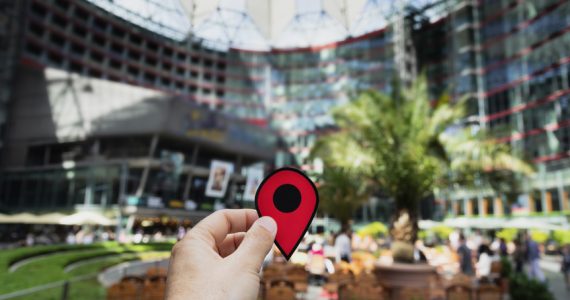
Geolocation, the latest smart building development
Working on our smart building approach for the new VINCI head office in particular convinced us that modern, connected buildings should have geolocation capabilities. In other words, they should be equipped with a network of beacons that use triangulation to locate receivers (Radio Frequency Identification [RFID] badges, smartphones, Bluetooth Low Energy [BLE] or Ultra‑Wideband [UWB] micro transmitters). This would provide users with a system similar to the kind of GPS device we use outside.
Several solutions are available, such as triangulation through WiFi antennas or BLE, RFID or UWB beacons.
But the technology that seems to be most popular — and that offers the best compromise between accuracy and cost — is Bluetooth.
Start‑ups previously offered battery‑powered beacons specifically for geolocation. Beacons now, however, tend to be integrated into BMS multi sensors. Existing start‑ups will probably stop providing beacons and focus on geolocation services. This will be a paid service, provided on subscription.
New contenders also offer BLE multi sensors that combine other functions such as air quality measurements and that are linked to the lighting control systems. The initial investment and cost of signing up to the service are considerably more expensive, but the solutions are more accurate and powerful.
Once an investment has been made to acquire BLE geolocation infrastructure — for what could be a modest amount, as a BLE transmitter costs little more than €10 — users can benefit from geolocation, along with the high added‑value services it entails: looking for contacts or rooms, finding cars in car parks, monitoring valuable assets (in hospitals for example), guiding customer journeys, assisting maintenance, etc.
There is bound to be much more potential, and new and unexpected uses of these solutions will come to light.
Did you like the article ?



